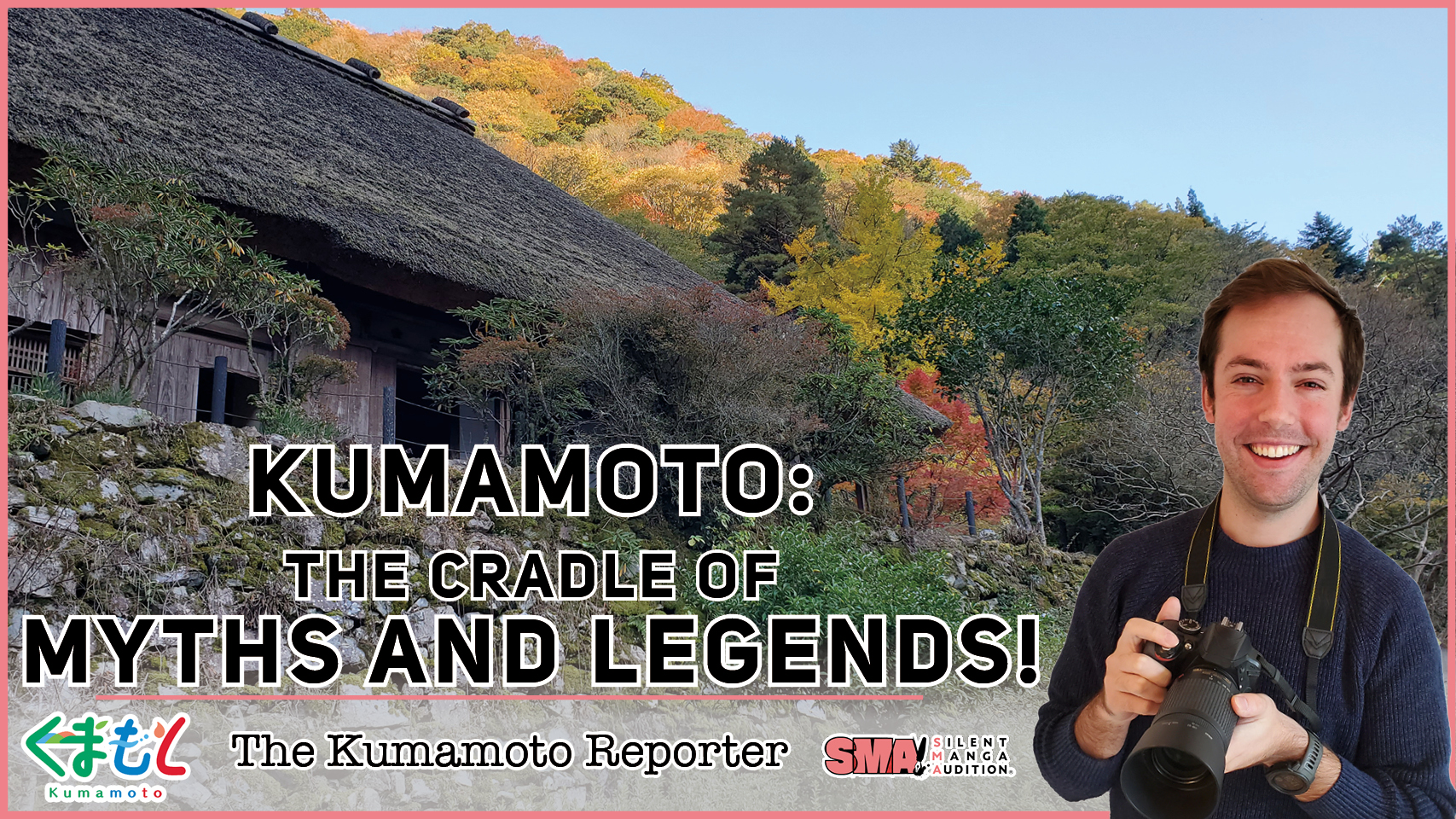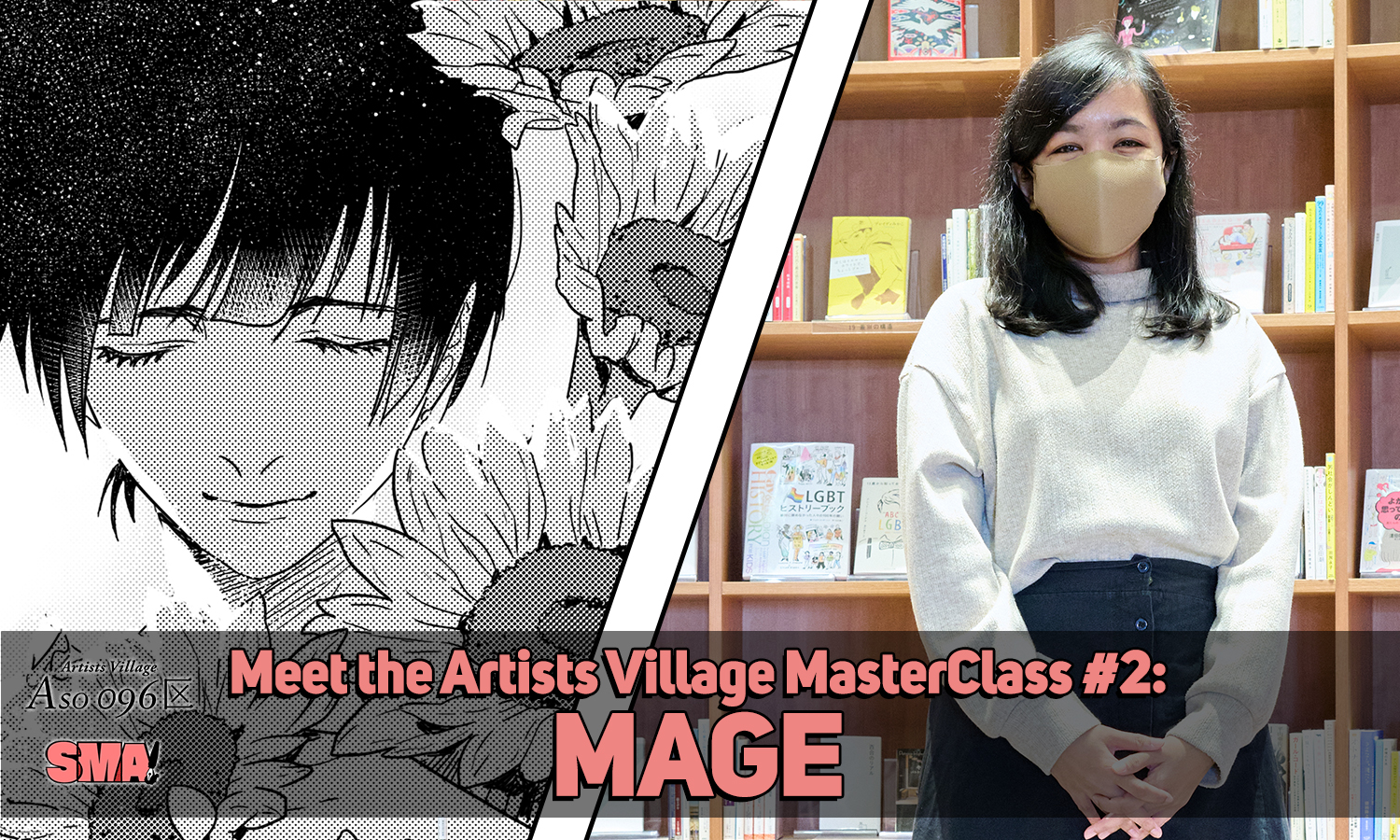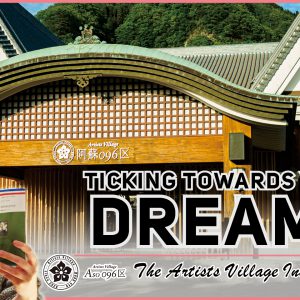
The Kumamoto Reporter #07 – Kumamoto: The Cradle of Myths and Legends!
23/03/2022
7 min read
Hey SMA community! Last time we got fired up by taking a look at the Land of Fire’s (Kumamoto’s) festivals, an important part of its culture and history. This time we’ll take a step into the fantastical world of Kumamoto’s legends and infamous “Yokai,” or Japanese spirits! First, let’s take a look at Kumamoto’s mystical and mysterious Yokai.
 Amabié
Amabié is a Kumamoto Yokai that has been in recent news due to the fact that she can protect against disease and plague. A strange mermaid type creature with three legs, wavy hair, and a beak, Amabié first appeared in 1846 off of the sea coast and prophesied the following: “From this year on, you will have a bountiful harvest for six years, but if a plague spreads, show people a picture of me.” Many illustrations have been based on the original drawing of this benevolent Yokai in the hopes to ward off disease.
Amabié
Amabié is a Kumamoto Yokai that has been in recent news due to the fact that she can protect against disease and plague. A strange mermaid type creature with three legs, wavy hair, and a beak, Amabié first appeared in 1846 off of the sea coast and prophesied the following: “From this year on, you will have a bountiful harvest for six years, but if a plague spreads, show people a picture of me.” Many illustrations have been based on the original drawing of this benevolent Yokai in the hopes to ward off disease.
 Abura sumashi
The Abura sumashi are said to be extremely rare Yokai that are native to Kumamoto. Their name literally means “oil presser,” a phrase referring to the act of pressing oil out of tea plant seeds. Legend has it that the abura sumashi are the ghosts of tea oil thieves, which was an expensive and time consuming product to make. Their appearance is of a squat humanoid with a large, ugly potato shaped head. Watch out for them in the mountains where wild tea plants grow!
Yamawaro
Another mountain dwelling Yokai appears! The Yamawaro are known by different names based on different areas in Kumamoto, and are said to be Kappa (famous Yokai who have a turtle-like appearance) that have migrated from rivers to the mountains. With the appearance of a 10 year old child with one eye, long hair, and fur covering its body, the Yamawaro love to play pranks and do sumo. If you’re not careful, they’ll hop in your bath and stink up the place!
Gokanosho: A hidden samurai village
One of Kumamoto’s greatest legends is based on real historical events. Long ago during the Genpei War (1180–1185), the powerful Taira and Minamoto clans fought each other with the Minamoto clan emerging as the victors. This began the Minamoto clan’s military rule as the Kamakura shogunate from 1192 to 1333. Utterly defeated, the Taira clan (also called “Heike”) fled to the remote corners of Japan, far from the reach of the Minamoto clan. Legend says that one of the places they hid was “Gokanosho,” deep in the mountains of Kumamoto. Even today, traditional thatched private houses remain in this secluded gorge that’s famous for its natural beauty and fall leaves.
The legend of how Aso was made
Another Kumamoto legend stems from its natural history and tells how the Aso region, home of our Artists Village Aso 096k, was formed. Hundreds of thousands of years ago, the colossal Aso volcano erupted and collapsed in on itself, forming a giant lake. Legend has it that Takeiwatatsu no Mikoto, the main deity of Aso Shrine and the grandson of Emperor Jinmu (the first Emperor of Japan) wanted to make the Aso region livable for humans. He kicked part of the caldera to let the lake drain, but fell after kicking it, which led the area that he kicked to be called “Tatenu” which means “can’t stand” in Japanese. “Tatenu” would eventually become “Tateno,” an area that is in southern Aso. Takeiwatatsu no Mikoto noticed that the water stopped flowing out, and looked down to see a giant catfish at the bottom of the lake. He asked it to leave, which it politely agreed to and went to Kashima in south Kumamoto City. The giant catfish’s soul was enshrined there, but the shrine was eventually moved to Kokuzo Shrine, directly 6km north of Aso Shrine.
Legends and supernatural creatures not only give you a glimpse into a region’s history, but can also inspire new stories! Be sure to check out one of the Kumamoto Reporter’s previous articles to learn how two shrines in Fukuoka and Oita may have inspired some aspects of the hit manga Demon Slayer. Oita is also famous for a very unique and “hellish” dish…stay tuned next time for a look at the legendary cuisine of Kyushu and Kumamoto!
Abura sumashi
The Abura sumashi are said to be extremely rare Yokai that are native to Kumamoto. Their name literally means “oil presser,” a phrase referring to the act of pressing oil out of tea plant seeds. Legend has it that the abura sumashi are the ghosts of tea oil thieves, which was an expensive and time consuming product to make. Their appearance is of a squat humanoid with a large, ugly potato shaped head. Watch out for them in the mountains where wild tea plants grow!
Yamawaro
Another mountain dwelling Yokai appears! The Yamawaro are known by different names based on different areas in Kumamoto, and are said to be Kappa (famous Yokai who have a turtle-like appearance) that have migrated from rivers to the mountains. With the appearance of a 10 year old child with one eye, long hair, and fur covering its body, the Yamawaro love to play pranks and do sumo. If you’re not careful, they’ll hop in your bath and stink up the place!
Gokanosho: A hidden samurai village
One of Kumamoto’s greatest legends is based on real historical events. Long ago during the Genpei War (1180–1185), the powerful Taira and Minamoto clans fought each other with the Minamoto clan emerging as the victors. This began the Minamoto clan’s military rule as the Kamakura shogunate from 1192 to 1333. Utterly defeated, the Taira clan (also called “Heike”) fled to the remote corners of Japan, far from the reach of the Minamoto clan. Legend says that one of the places they hid was “Gokanosho,” deep in the mountains of Kumamoto. Even today, traditional thatched private houses remain in this secluded gorge that’s famous for its natural beauty and fall leaves.
The legend of how Aso was made
Another Kumamoto legend stems from its natural history and tells how the Aso region, home of our Artists Village Aso 096k, was formed. Hundreds of thousands of years ago, the colossal Aso volcano erupted and collapsed in on itself, forming a giant lake. Legend has it that Takeiwatatsu no Mikoto, the main deity of Aso Shrine and the grandson of Emperor Jinmu (the first Emperor of Japan) wanted to make the Aso region livable for humans. He kicked part of the caldera to let the lake drain, but fell after kicking it, which led the area that he kicked to be called “Tatenu” which means “can’t stand” in Japanese. “Tatenu” would eventually become “Tateno,” an area that is in southern Aso. Takeiwatatsu no Mikoto noticed that the water stopped flowing out, and looked down to see a giant catfish at the bottom of the lake. He asked it to leave, which it politely agreed to and went to Kashima in south Kumamoto City. The giant catfish’s soul was enshrined there, but the shrine was eventually moved to Kokuzo Shrine, directly 6km north of Aso Shrine.
Legends and supernatural creatures not only give you a glimpse into a region’s history, but can also inspire new stories! Be sure to check out one of the Kumamoto Reporter’s previous articles to learn how two shrines in Fukuoka and Oita may have inspired some aspects of the hit manga Demon Slayer. Oita is also famous for a very unique and “hellish” dish…stay tuned next time for a look at the legendary cuisine of Kyushu and Kumamoto!

 Amabié
Amabié is a Kumamoto Yokai that has been in recent news due to the fact that she can protect against disease and plague. A strange mermaid type creature with three legs, wavy hair, and a beak, Amabié first appeared in 1846 off of the sea coast and prophesied the following: “From this year on, you will have a bountiful harvest for six years, but if a plague spreads, show people a picture of me.” Many illustrations have been based on the original drawing of this benevolent Yokai in the hopes to ward off disease.
Amabié
Amabié is a Kumamoto Yokai that has been in recent news due to the fact that she can protect against disease and plague. A strange mermaid type creature with three legs, wavy hair, and a beak, Amabié first appeared in 1846 off of the sea coast and prophesied the following: “From this year on, you will have a bountiful harvest for six years, but if a plague spreads, show people a picture of me.” Many illustrations have been based on the original drawing of this benevolent Yokai in the hopes to ward off disease.
 Abura sumashi
The Abura sumashi are said to be extremely rare Yokai that are native to Kumamoto. Their name literally means “oil presser,” a phrase referring to the act of pressing oil out of tea plant seeds. Legend has it that the abura sumashi are the ghosts of tea oil thieves, which was an expensive and time consuming product to make. Their appearance is of a squat humanoid with a large, ugly potato shaped head. Watch out for them in the mountains where wild tea plants grow!
Abura sumashi
The Abura sumashi are said to be extremely rare Yokai that are native to Kumamoto. Their name literally means “oil presser,” a phrase referring to the act of pressing oil out of tea plant seeds. Legend has it that the abura sumashi are the ghosts of tea oil thieves, which was an expensive and time consuming product to make. Their appearance is of a squat humanoid with a large, ugly potato shaped head. Watch out for them in the mountains where wild tea plants grow!





























